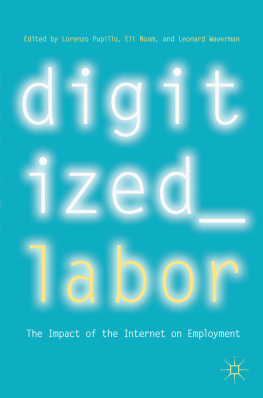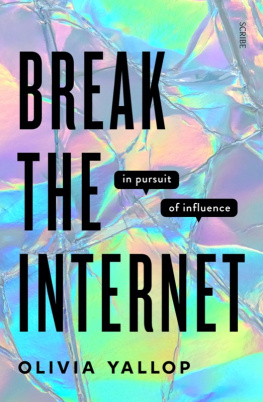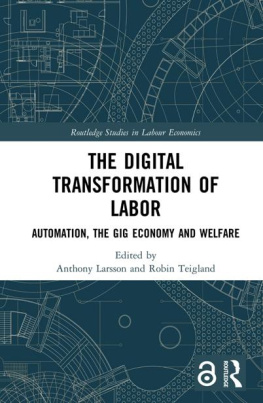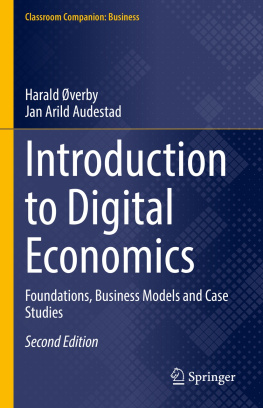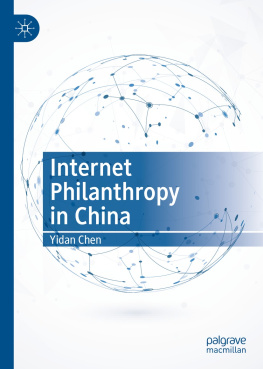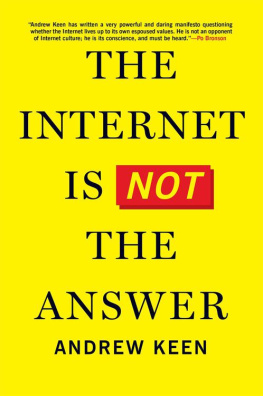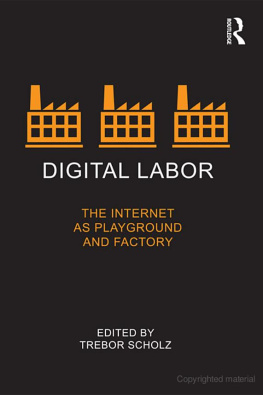1. Introduction
The progress of technology in recent decades has been extraordinary. The great opportunities have been well recognised, but technology has also generated new divisions between winners and losers. In particular, information and communications technology ( ICT ) has been an engine of growth and transformation of economy and society but has impacted job flows and wage inequality . The result has been fear and uncertainty, and backlash. The purpose of our book is therefore to produce facts, analysis and evidence on the relationship between the diffusion of Internet and its impact on employment . The book also aims to fill a gap between academic research in this field, the cost and benefits of ICT diffusion and more general and accessible materials.
We took as our point of departure the structural transformation the world of work is currently undergoing. According to the Organization for Economic Cooperation and Development ( OECD ), three major forces are profoundly changing the world of work: demographic change, globalisation and technology, especially the digital revolution. Among the demographic factors, the ageing population is capturing the attention of policy makers in the OECD countries for its impact on the affordability of health care and pension systems. These changes may suggest the need to create incentives for older workers to remain active in the labour market for a longer period of time. But such incentives may anger younger workers who feel that older workers are taking their jobs .
In the area of globalisation, the fragmentation of production processes and jobs along a global value chain is changing the occupational structure of jobs and their tasks . These powerful changes are often mistaken for the third force at workthe digitisation process. Increasing computer power coupled with the growing penetration of the Internet , Big Data , the Internet of Things (IoT) and Artificial Intelligence (AI) are profoundly changing the nature of work: by whom, where and how it will be performed.
But what are the actual impacts of digitisation on labour? The current debate offers a variety of positions ranging from the pessimistic view of unprecedented job destruction, high rates of unemployment and massive increases in inequality to the optimistic idea that employment will adapt to the new technologies and that complementarities between humans and machines will generate new jobs and opportunities .
The most pessimistic study on the impact of digital technologies on future work is by Carl Benedikt Frey and Michael Osborn () claiming that occupation-based approaches tend to overestimate the impact of job automation , since occupations categorised as high risk may contain many tasks that are difficult to automate. Therefore, following the task-based approach instead of the broader occupational analysis, the OECD researchers findings reduce the pool of jobs at high risk across the OECD countries to an average of only 9%.
A much more optimistic approach is suggested by the McKinsey Global Institute s report (2011), which concludes on the basis of its global SME survey that the Internet has created 2.6 jobs for every one job destroyed. ) follows the path of digital technologies as powerful catalysts for job creation , and observes that high-tech jobs trigger a multiplier effect, increasing employment and salaries in non-high-tech sectors: one high-tech job creates five complementary non-high-tech jobs , both in skilled occupations (lawyers, teachers) and in unskilled ones (waiters, carpenters).
Beyond the issue of the net impact on employment , which our book deals with in several chapters, there are also fundamental questions related to the structural changes in the workplace that affect the nature of work itself. One of the most discussed issues is job and wage polarisation. As discussed in Chapter ) show these findings for Europe . The jobs and wages polarisation has determined what was has been called the great hollowing out of the middle class: higher paying jobs requiring high skills and creativity have proliferated; demand for low skills , manual jobs not replaceable by computers has also increased; but middle skills , middle-class jobs like bookkeeping, clerical work and routine manufacturing jobs, have been substituted by computers and the Internet . These processes combined with some of the effects of globalisation also have strong socio-economic implications, which have contributed to recent seminal political outcomes such as the Brexit vote in the UK, Trumps election in the United States and the rise of populism in Europe .
This labour market process of substitution of computers for workers to execute routine jobs, called routinisation and often associated with labour market polarisation, seems to signal the deeper and more structural effects of how digitalisation will affect our lives. According to Brynjolfsson and McAfee ( This transformation brings a bounty of innovation related to the exponential, digital and combinational nature of the new digital technologies . While we have experienced so far only the transformation of the way in which we communicate, most of the gains from the digital transformation are still ahead of us. However, with the bounty brought by these technologies also comes the tendency to replace human capital in skilled tasks once considered safe from automation .
But is this not a scenario we have already witnessed over the past two centuries? Technological innovations have always disrupted the job market , but after a period of labour turmoil, previous technological revolutions have brought more jobs and prosperity. The question now is: Is it different this time and if so, why is that the case? This question resides at the centre of Nigel M. de S. Camerons 2017 book Will robots take your job? . Two dimensions may make it reasonable to think that this wave of technological disruption could, in fact, be different: time and scale .
We are in the midst of a transition to a digital economy , and there is widespread consensus that the transformation brought by the digital technologies in the economy and society today is proceeding at much faster speed than those generated by previous waves of technologies . Tom Standage, digital editor for The Economist , interviewed for a Pew Research on the future of jobs stated:
Previous technological revolutions happened much more slowly, so people had longer to retrain, and [also] moved people from one kind of unskilled work to another. Robots and AI threaten to make even some kinds of skilled work obsolete (e.g., legal clerks). This will displace people into service roles, and the income gap between skilled workers whose jobs cannot be automated and everyone else will widen. This is a recipe for instability .
The McKinsey Global Institute states that AI is contributing to a transformation of society happening ten times faster and at 300 times the scale, or roughly 3000 times the impact of the Industrial Revolution . All this means that it is difficult to predict what will happen and that the changes in the future will likely be massive.
The breadth of change is major and the impact of technological change is more pervasive than past changes that were linked to the diffusion of other technologies . Their impact is much more widespread than in the past. All sectors of the economy are involved. The example of self-driving vehicles is a case in point. Not only will many driving jobs disappear (truck, bus and taxi drivers), but also with fewer vehicles purchased there will be an impact on car manufacturing , the petroleum industry, farming (ethanol) and the auto insurance industry. Greater safety will also have an impact on the health care industry . Furthermore, these effects will not be geographically limited as was the case in the closing of factories in steel towns or mines in coal-mining villages.

